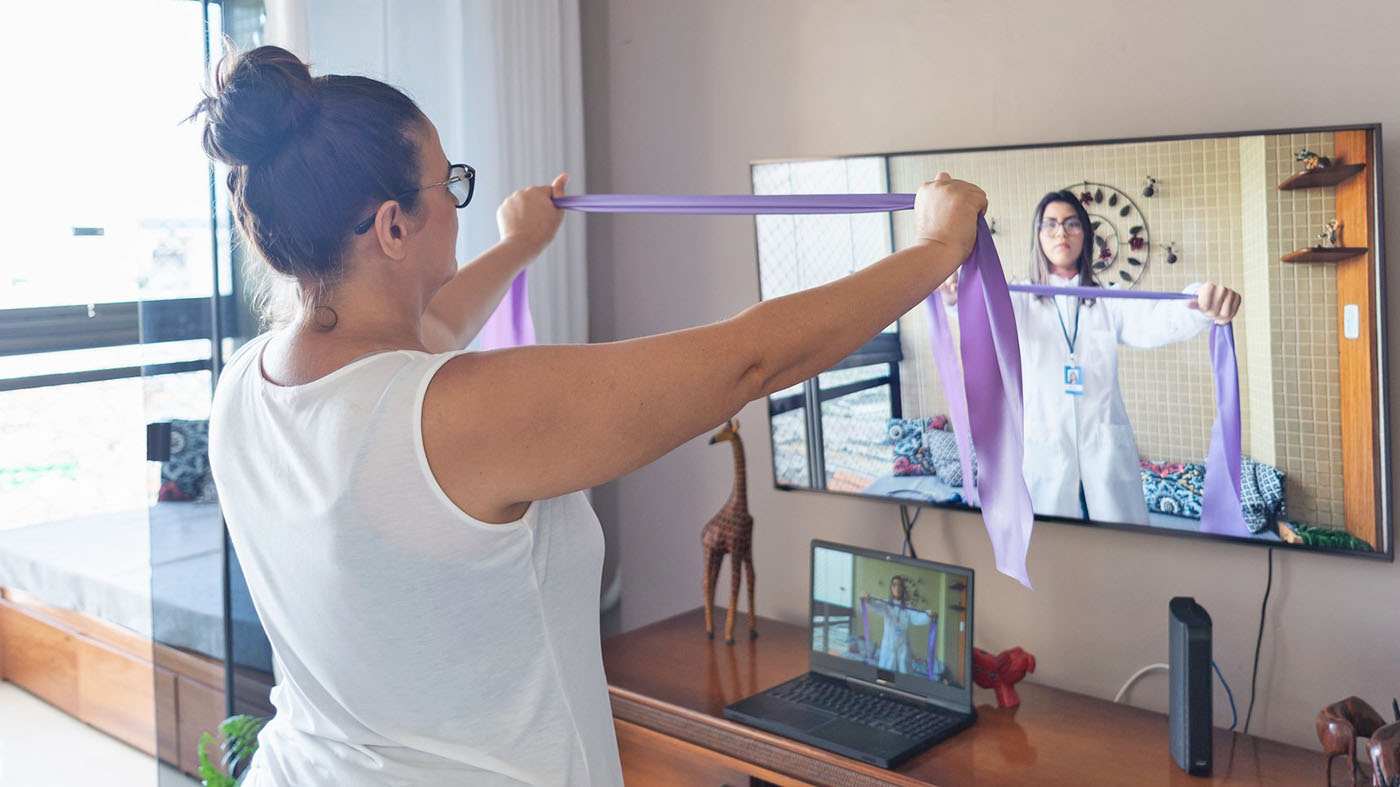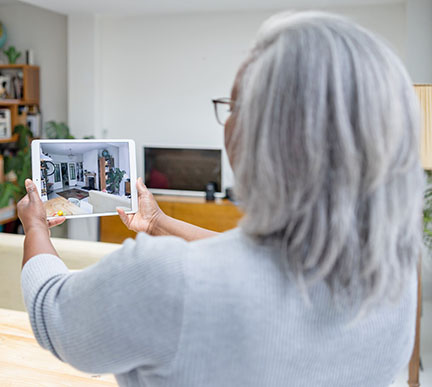Veterans leaving a care facility and returning home may need to adjust their living space or lifestyle to ensure their safety and independence. VA’s Integrated TeleOT program offers virtual occupational therapy (OT) services to help Veterans address improved function and well-being by allowing them to age well in their homes and communities.
Funded by the Office of Rural Health, Integrated TeleOT is based at Cincinnati VA and Ann Arbor VA. The program currently serves veterans in Ohio, Indiana, Kentucky and Michigan, and is looking to expand to other VA facilities.
“Veterans in rural areas sometimes don’t have access to home health therapy, or there’s not an occupational therapist who lives nearby,” said Hanna Tekola, Integrated TeleOT occupational therapist. “Integrated TeleOT is filling that gap. This is an awesome service that we offer to Veterans.”
Integrated, all-encompassing care
Similar to in-person OT, Integrated TeleOT offers a broad range of virtual health and well-being services. Each Veteran’s experience with the program may look different because Integrated TeleOT delivers care that is tailored for specific needs and situations.
Integrated TeleOT provides home safety evaluations and fall risk assessments. This may involve ensuring a Veteran has the necessary equipment to perform basic tasks such as taking a shower, climbing stairs and getting dressed. And because the program takes a Whole Health approach, Integrated TeleOT also addresses social determinants of health, such as mental health, financial and leisure management care.
“We can do pretty much anything within our scope of practice,” said Jamie Basch, Integrated TeleOT’s program coordinator. “Mostly, it has been imminent home safety needs that are keeping people from navigating and aging in their home safely.”
After being discharged from a care facility such as a hospital or rehab center, Veterans referred to the program have an initial phone screening. They then use the VA Video Connect app to have video telehealth visits with a remote occupational therapist to develop their care plan.
“OT looks at the whole person. We’re helping you build healthy habits and routines,” Basch added.
Decreasing pain, increasing independence
The Integrated TeleOT team strives to ensure that Veterans retain their independence and dignity after being discharged from a facility. Although Integrated TeleOT serves all qualified Veterans, the program’s main priority is to help older Veterans who live in rural areas.
The Integrated TeleOT team also connects Veterans to other VA services, such as My HealtheVet. This enables Veterans to continue maintaining their care plan after Integrated TeleOT.
“We teach them how to access their appointments, how to refill prescriptions and how to access Whole Health exercise programs,” said Molly Santioni, Integrated TeleOT occupational therapist. “It helps keep our Veterans connected to the bigger population of Veterans which I think is really nice, especially when they are in a rural area.”
To learn more about Integrated TeleOT, talk to your VA care team or visit the Rehabilitation and Prosthetic Services webpage.
Topics in this story
More Stories
Pacific Islands VA has opened a new urgent care clinic inside the Daniel K. Akaka VA Clinic.
From one battle to the next, including four types of cancers, Eliot Winokur’s resilience remains unshaken.
As severe weather threatened Mississippi, local news warned of a dangerous outbreak of tornadoes. A VA nurse stepped up.






